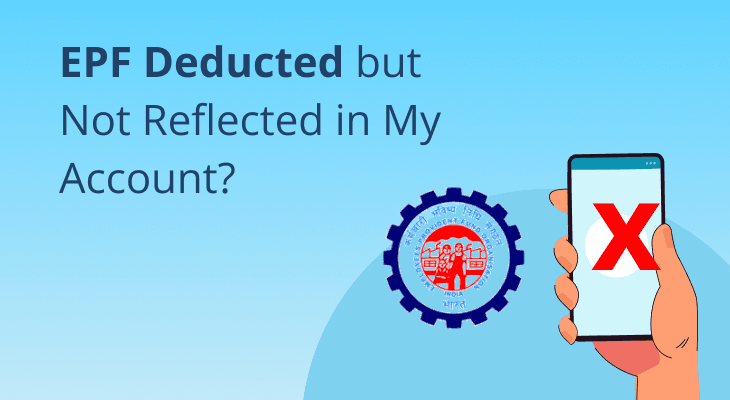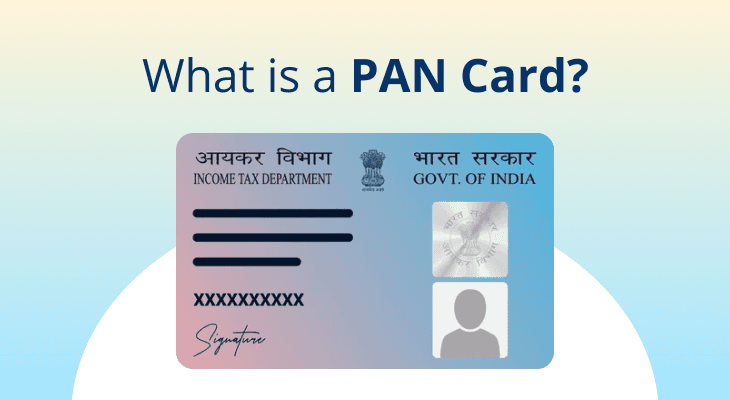
Why Is My EPF Deducted But Not Showing In Account?
The Employees’ Provident Fund (EPF) is a secure retirement corpus that employees build over their working years. Since it is the fruit of their hard work, ensuring that EPF deductions reflect correctly in the account is crucial. But what happens when your contribution is deducted from your salary, yet it does not show in your account? We’ll find out in this article.
Understanding EPF Contributions
EPF is a government-backed retirement scheme managed by the Employees’ Provident Fund Organisation (EPFO). Both employees and employers contribute to it.
Employee contribution: 12% of basic salary + dearness allowance + retaining allowance
Employer contribution: Out of the 12% employer share, 3.67% goes into the EPF account. The remaining 8.33% is directed to the Employees’ Pension Scheme (EPS).
The EPF account balance earns interest annually, which is reviewed by the government each year.
Apart from fixed interest income, the EPF deduction under 80C also offers tax benefits up to ₹1.5 lakh annually. This makes EPF a safe and tax-efficient investment option for salaried employees.
Common Reasons For EPF Credit Delays And Claim Rejections
Sometimes, even when your salary slip shows an EPF deduction, it may not immediately reflect in your EPF passbook or your withdrawal request may get rejected. This could be due to several reasons, such as:
- Delays from the employer: Not depositing the EPF amount on time is an offence under the EPF Act, 1952. However, delays in corporate setups are common due to internal processing or accounting issues.
- Technical glitches: Sometimes, the employer deposits the amount, but due to technical issues or delays at EPFO’s end, it may not immediately reflect in your passbook. While technology has simplified processes like EPF online payments, occasional glitches can still cause complications.
- Incomplete or incorrect Know Your Customer (KYC): Your Aadhaar, Permanent Account Number (PAN), and bank details must be correctly updated on the EPFO portal to avoid credit delays or claim rejections.
- Inactive or unlinked Universal Account Number (UAN): If you make a claim without a valid UAN, it will be rejected. For online claims, it is mandatory for Aadhaar to be linked with your UAN.
- Ineligibility for withdrawal: While the entire EPF balance can be withdrawn easily after retirement, premature withdrawals are allowed only under specific conditions. For instance, the withdrawal must be made for permitted purposes, and you must meet minimum service requirements. If you do not fulfil the eligibility criteria, the withdrawal request will be rejected.
Steps To Take When The EPF Deduction Does Not Show
Here’s what you can do if your EPF contributions are deducted but not credited to your account:
- Check the transaction status: Use the EPFO portal to check your EPF passbook. If the contribution is still under process, it may not appear yet.
- Recheck the account: Sometimes, it may just be an oversight due to a cursory glance at your passbook. Go through your EPF passbook carefully under all heads.
- Wait for some time: Contributions usually take a few days to reflect in your account. In many cases, this is within 2 to 4 working days.
- Speak with your employer: Check with your employer if there has been any delay due to internal issues.
- Seek help from EPFO: If the issue persists, lodge a grievance with the EPFO through the official EPF i-Grievance Management System (EPFiGMS) portal and track the status.
Legal Protections For Employees
The Employees’ Provident Funds and Miscellaneous Provisions Act, 1952 was introduced to safeguard the financial well-being of employees after retirement. To ensure compliance, the Central Government appoints inspectors with the authority to visit any PF-registered establishment and examine records. It also employs risk-based inspection systems that identify and flag high-risk cases. Additionally, a grievance redressal system, ombudsman, and appellate panel are in place to help employees.
Under the Act, employers are required to deposit EPF contributions by the 15th of the following month. Failure to do so attracts interest, damages, and legal consequences.
Interest: 12% per annum interest on delayed contributions, calculated monthly
Damages:
- Delay up to 2 months – 5% of the unpaid amount
- Delay of 2 to 4 months – 10% of the unpaid amount
- Delay of 4 to 6 months – 15% of the unpaid amount
- Delay beyond 6 months – 25% of the unpaid amount
Legal consequences: Persistent non-payment can lead to penalties, fines, or imprisonment
Tips To Avoid EPF Issues
Here are some tips to help prevent issues related to your EPF account:
- Ensure you have an active UAN.
- Keep your KYC details updated in the EPFO system.
- Choose the correct form for withdrawals or transfers.
- Ensure nominee details are up to date.
- Maintain records of your salary slips for reference.
- Transfer your EPF account promptly when you switch jobs.
Conclusion
EPF contributions are deducted from your salary and credited to your EPF account. Sometimes, while deductions happen on time, the credit may fail or be delayed due to several reasons. However, there are effective ways to resolve these issues, including seeking your employer’s assistance and approaching the EPFO for intervention.
Also Read: EPF Eligibility Explained: Rules, Criteria & Benefits
FAQ
How can I check my EPF balance online?
You can check your EPF balance online either through the EPFO portal, UAN portal, or UMANG app.
How long does it take for EPF grievances to be resolved?
The EPFO usually takes between 15 and 30 days to resolve EPF-related grievances.
What interest rate is applicable to EPF contributions?
The EPF interest rate is reviewed and set annually.
How can I ensure my EPF contributions are credited on time?
Maintain an active UAN and ensure your Aadhaar, PAN, and bank details are correctly linked to it. Regularly check your EPF passbook through the EPFO portal. If contributions are deducted but not reflected after the 15th of the next month, follow up with your employer. If the issue remains unresolved, raise a complaint through the EPFiGMS portal or approach your regional EPFO office.
What information is required to file a grievance with EPFO?
To file your complaint on the EPFiMGS portal, you need your UAN, Pension Payment Order (PPO) number or establishment number, along with relevant supporting documents.


